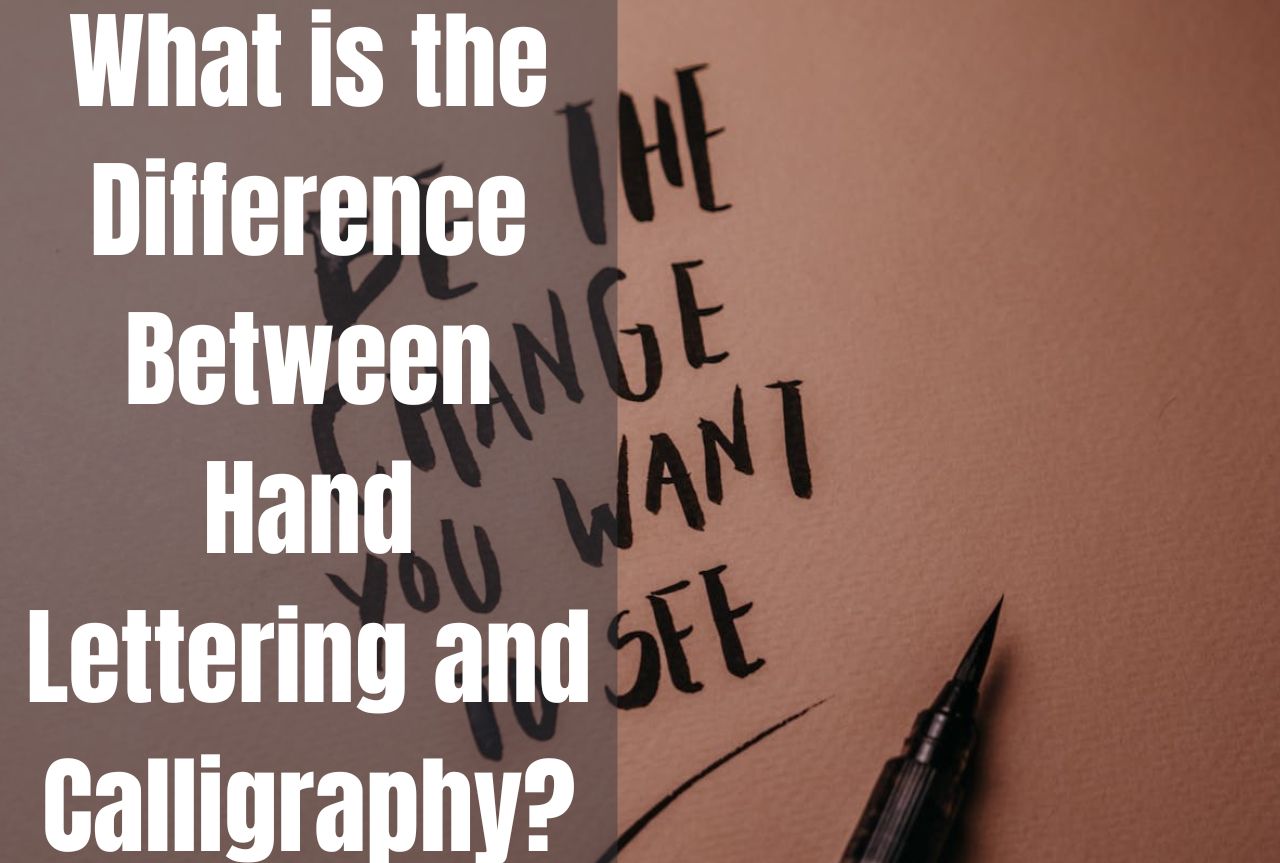Hand lettering and calligraphy are two distinct art forms that have been around for centuries. While many people often confuse the two, they have significant differences in their techniques, tools, and artistic expression. In this article, we will explore these differences in depth, providing a comprehensive understanding of these beautiful arts.
Definitions
Hand Lettering
Hand lettering is the art of drawing letters, words, and phrases by hand. It involves creating unique and stylized letterforms using various tools such as markers, brushes, and pencils. Hand lettering emerged as a modern art form, gaining popularity in the design and branding industries for its versatility and creative freedom.
Calligraphy
Calligraphy, on the other hand, is the art of writing beautifully with a pen or brush. It involves mastering specific techniques and styles that follow structured rules and guidelines. Calligraphy has a rich history dating back centuries and is deeply rooted in various cultures and traditions, such as Arabic, Chinese, and Western calligraphy.
Key Differences
Tools and Materials
Hand lettering artists often use a wide range of tools, including markers, brushes, pencils, and even digital tools like tablets and styluses. The materials used can vary from regular paper to specialized surfaces like watercolor paper or chalkboards. In contrast, calligraphers primarily use specialized tools like nibs, ink, and calligraphy pens designed for specific scripts and styles. They also require high-quality paper or surfaces that can handle the ink flow and pressure required for calligraphy.
Techniques
Hand lettering techniques are more flexible and allow for a greater degree of creative expression. Artists can use various styles, including faux calligraphy, brush lettering, and illustrative lettering. The focus is on creating visually appealing and unique letterforms.
In calligraphy, the techniques are more structured and require proper stroke order, pressure control, and adherence to specific styles and rules. Calligraphers must master the art of creating beautiful letterforms through precise movements and a deep understanding of the script they are working with.
Styles and Artistic Expression
Hand lettering styles can range from modern and contemporary to vintage and retro. Artists have the freedom to experiment and create their own unique styles, blending different influences and techniques.
In contrast, calligraphy styles are more defined and have a rich history behind them. Some of the most well-known calligraphy styles include Copperplate, Spencerian, Gothic, and various Arabic and Chinese scripts. While there is room for personal expression within these styles, calligraphers must adhere to the fundamental rules and guidelines of each script.
Purpose and Applications
Hand lettering is widely used in design, branding, and personal projects. It can be found on logos, packaging, advertisements, and even as decorative elements in home decor and art projects.
Calligraphy, on the other hand, has traditionally been used for formal documents, invitations, and artistic pieces. However, in recent years, it has also found applications in modern design projects, such as wedding invitations, logos, and even typography for websites and social media.
Learning Hand Lettering vs. Calligraphy
Hand Lettering
Learning hand lettering can be relatively accessible, with a wide range of resources available. Many books, online courses, and tutorials offer step-by-step guidance on techniques, styles, and practice exercises. Developing a personal style in hand lettering is encouraged, and practice is key to refining one’s skills.
Calligraphy
Calligraphy often requires more formal training and dedication. Traditional calligraphy classes or workshops are recommended to learn proper stroke techniques and the intricacies of different scripts. Mastering calligraphy takes time and patience, as it involves developing muscle memory and a deep understanding of the art form’s history and traditions.
Combining Both Art Forms
While hand lettering and calligraphy have distinct differences, there is also a growing trend of artists combining these art forms. Some hand letterers incorporate calligraphic elements into their work, while calligraphers may use hand lettering techniques to add a modern twist to their pieces.
This fusion of styles can create unique and visually striking works of art, blending the structured elegance of calligraphy with the creative freedom of hand lettering. Many artists have found success in this hybrid approach, appealing to both traditional and contemporary audiences.
The Bottom Line
Hand lettering and calligraphy are two beautiful and captivating art forms that have their own unique characteristics. While hand lettering offers creative freedom and versatility, calligraphy embraces structured elegance and rich tradition.
Whether you are drawn to the modern and expressive nature of hand lettering or the timeless beauty of calligraphy, both art forms offer opportunities for artistic expression and personal growth. By understanding their differences and appreciating their strengths, you can embark on a journey of exploration and mastery in these incredible artistic realms.



